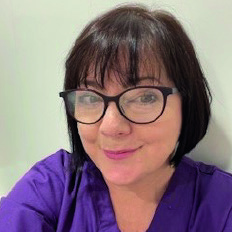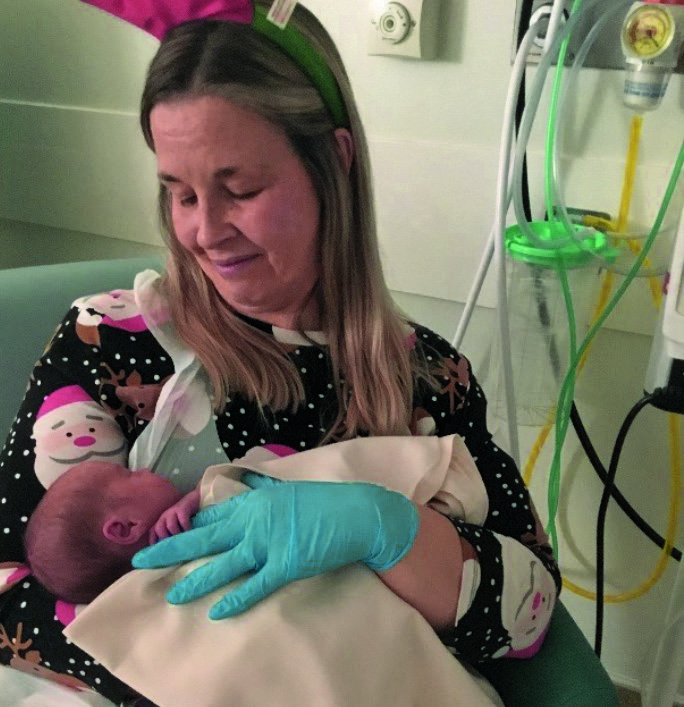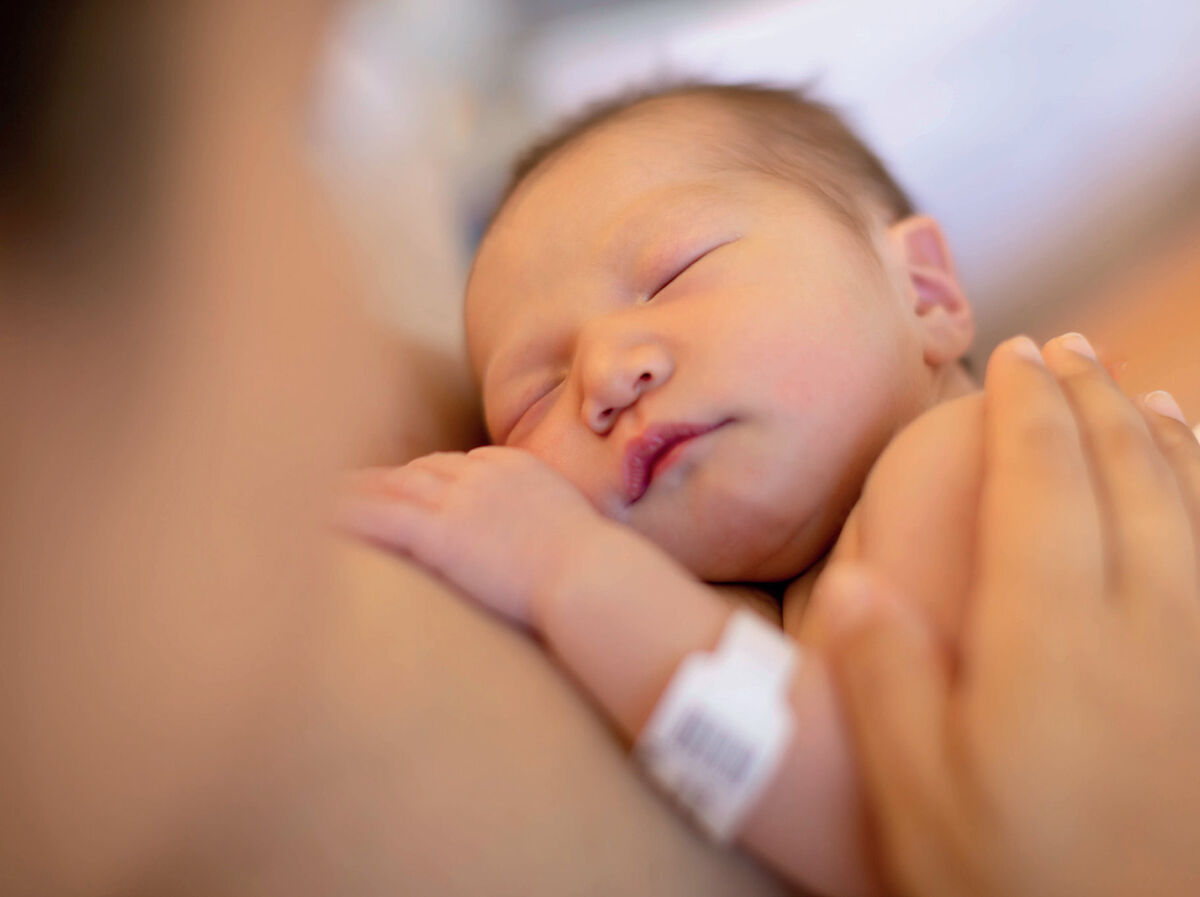 Amanda Lawes talks about introducing Family Integrated Care within the Singleton Neonatal Intensive Care Unit and her work to provide positive touch and skin to skin care for babies most in need.
Amanda Lawes talks about introducing Family Integrated Care within the Singleton Neonatal Intensive Care Unit and her work to provide positive touch and skin to skin care for babies most in need.
Neonatal occupational therapy is currently a rapidly expanding area of practice for clinicians. This field of practice only began in the UK in late 1980s to early 1990s, when the UK’s first neonatal occupational therapist, Dr Inga Warren CBE, began her pioneering work in neonates at St Mary’s Hospital in London.
For many years afterwards, the field of neonates was a niche area of clinical practice, with small numbers of clinicians practising in the UK.
Neonatal occupational therapy has been much more established in the US, with a strong evidence base, and thanks to this, in addition to the clinical excellence of UK-based neonatal clinicians, the neonatal occupational therapy workforce has gradually increased.
As a result of the Neonatal Critical Care Transformation Review in England (2020), the Getting it Right First Time (GIRFT 2022) report, investment from the NHS Long-Term Plan, and the final report of the Ockenden Review (2022), funding was made available to develop an expert neonatal allied health professionals (AHP) workforce.
This has led to a significant increase in neonatal occupational therapy roles in England. The devolved nations – Scotland, Northern Ireland and Wales – are working hard to catch up with England, but have a long way to go; in Wales, there are currently only six funded neonatal occupational therapy posts.
I work as a neonatal occupational therapist (0.5 WTE), based in the Singleton Neonatal Intensive Care Unit (NICU) in Swansea, which is a level three neonatal unit providing care for the smallest and sickest babies in South Wales and surrounding areas.
None of the nine neonatal units in Wales currently meet the minimum recommended neonatal AHP staffing (BAPM 2021). However, several key projects looking at the neonatal workforce have been commissioned by the Welsh Government in the past year and work is underway to try and address this (Maternity and Neonatal Safety Support Programme 2023; Neonatal Services (Intensive Care, High Dependency and Special Care) Service specification 2023).
Alongside the other Welsh neonatal occupational therapists and a parent who had received neonatal occupational therapy when her own child was on the NICU in Singleton, I was invited to the Senedd in May 2023, to meet with Welsh Government to discuss why neonatal occupational therapy is such a valuable resource.
Singleton NICU has 26 cots, so I must carefully prioritise which babies and families will benefit most from occupational therapy intervention. Family Integrated Care (Fi Care) is an evidencebased model that places parents at the heart of their baby’s care.
The charity Bliss states this is a model of care that promotes a culture of partnership between parents and staff, enabling and empowering parents to be the primary carer of their own baby.
Singleton NICU was one of the first five neonatal units in the UK, along with Glasgow, Leeds, London and Birmingham, to adopt this model of care and I have played a lead role in the implementation of Fi Care within Singleton.
One of the key aims of Fi Care is to reduce parent-infant separation. Unfortunately, this is unavoidable for some babies. During the pandemic in 2020, one such case arose when a mother had to have her baby delivered early (‘Baby T’), due to a severe COVID-19 infection, resulting in the mother being admitted herself to intensive care for several weeks.
There is a wealth of evidence demonstrating the importance of positive touch and skin to skin care, sometimes referred to as kangaroo care, for babies being cared for in neonatal units (Charpak et al 2017).
Parental separation results in a lack of opportunity for these crucial positive touch experiences for the baby. American neonatal units have for some time used volunteer ‘cuddlers’, especially for babies experiencing neonatal abstinence syndrome (NAS), where mothers may have reduced or no contact with their babies (Hignell et al 2019).

Above: Adele with the baby in the neonatal unit
Singleton NICU is situated in the same building as Hafan Y Mor Children’s Therapy Centre, where they have a team of children’s occupational therapists and technical instructors. Adele Childs is a highly experienced OT technical instructor with over 28 years’ experience, 21 of which spent working with children.
Adele had experience in working with babies and had shown a great interest in my neonatal role and on her own initiative carried out some reading around neonatal occupational therapy practice.
When the case arose of ‘Baby T’, permission was sought from the neonatal matron for Adele to spend time on the neonatal unit, under my supervision, to provide ‘hand hugs’ or cuddles for this baby.
This intervention had a hugely positive impact on the baby; lower heart rate and higher oxygen saturations were both recorded. Feedback from the neonatal nursing team observing the baby indicated that he was more settled whenever he had these positive touch experiences.
I was already aware that there were frequent admissions to the neonatal unit of babies with NAS. These babies demonstrate significant dysregulation, with excessive crying, and demand a great deal of nursing staff time.
Following extensive discussion with the unit matron and children’s occupational therapy lead, a plan was made for Adele to provide regular sessions for babies with NAS on the neonatal unit, under my close supervision.
Due to the highly specialist nature of neonatal care, I devised a detailed competency and training programme for Adele, in conjunction with the unit clinical nurse educator. This programme was completed before Adele began any work on the neonatal unit.
Included in the programme was learning about preterm development, understanding symptoms and non-pharmacological treatment of NAS, understanding behavioural cues and recognising signs of a baby that was becoming unwell.
Adele also spent six months attending occupational therapy-led ‘Baby and Me’ parent education sessions.
The neonatal nursing and medical team have had a very favourable response to this support from Adele, and since this time, she also uses time on the low dependency unit to speak to parents whose babies are nearing discharge, prioritising late preterm babies that I may not have seen.
She provides them with universal information, such as the EI Smart Parent leaflets ( EISMART) that inform parents how to support their baby’s development at home. When needed, Adele can also provide some appropriate play and stimulation for post-term babies, again under my direction and supervision.
This has been felt to be an effective use of skill mix to increase the number of families that benefit from occupational therapy advice on the neonatal unit, who previously may have missed out on receiving this information.
Bliss (n.d) Family Integrated Care. Avalable at www.bliss.org.uk/health-professionals/familyintegrated-care [accessed 2 January 2025].
British Association of Perinatal Medicine (2021) Optimal arrangements for neonatal intensive care units in the UK. A BAPM framework for practice. Available at https://bit.ly/3Pkv4tj [accessed 2 January 2025].
Charpak N, Tessier R, Ruiz JG, Hernandez JT, Uriza F, Villegas J, Nadeau L, Mercier C, Maheu F, Marin J, Cortes D, Gallego JM, Maldonado D (2017) Twenty-year Follow-up of Kangaroo Mother Care Versus Traditional Care. Pediatrics, Jan;139(1): e20162063. doi: 10.1542/peds.2016- 2063. Epub 2016 Dec 12. PMID: 27965377.
Department of Health and Social Care (2022) Ockenden Review: Summary of findings, conclusions and essential actions. Available at www.gov.uk/government/publications/finalreport-of-the-ockenden-review [accessed 2 January 2025].
Hignell A, Carlyle K, Bishop C, Murphy M, Valenzano T, Turner S, Sgro M (2019) The Infant Cuddler Study: Evaluating the effectiveness of volunteer cuddling in infants with neonatal abstinence syndrome. Paediatric Child Health, 9:25(7): 414-418. doi: 10.1093/pch/pxz127. PMID: 33173551; PMCID: PMC7606161.
NHS England (2021) Neonatology – Getting it Right First Time report. Available at https://bit.ly/40h0KWL [accessed 2 January 2025].
NHS England and NHS Improvement (2020) Implementing the recommendations of the Neonatal Critical Care Transformational Review. 
Public Health Wales (2023) Improving Together for Wales, Maternity Neonatal Safety Support Programme Cymru Discovery Phase Report .
Welsh Health Specialised Services Committee (WHSSC) (2024) Neonatal Services (Intensive Care, High Dependency and Special Care) Service Specification: SS263. Available at https://bit.ly/3ZYOvNl [accessed 2 January 2025].
Words AMANDA LAWES, Clinical Lead Neonatal Occupational Therapy, Singleton Hospital Neonatal Unit, Swansea Bay University Health Board

